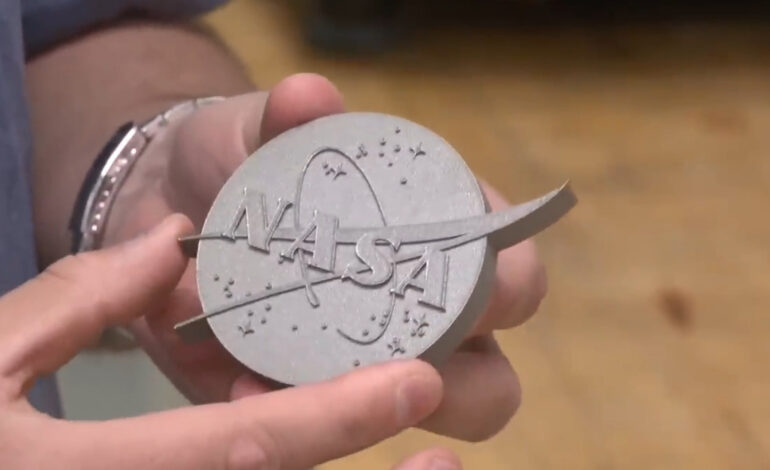NASA Develops Alloy GRX-810 Capable of Withstanding 2,000°F

NASA has developed a groundbreaking new alloy, known as Alloy GRX-810, which can withstand temperatures up to 2,000 degrees Fahrenheit. This innovation enhances the agency’s capabilities in space exploration and is particularly vital for future missions involving the Dream Chaser, set to debut in 2026. The alloy is generated through a unique process that incorporates nanoscale oxide particles within a metal base, followed by advanced 3D printing techniques.
This new material is not only a significant upgrade but also demonstrates superior properties compared to previous alloys used by NASA. Alloy GRX-810 exhibits a strength and flexibility that is up to 1,000 times more durable than other materials the agency has produced. The Oxide Dispersion Strengthened (ODS) nature of the alloy contributes to its enhanced resistance to failure, making it suitable for applications in both rocket engines and spacecraft.
Before proceeding to production, NASA conducted approximately 30 simulations to determine the optimal elemental mix for GRX-810. This preliminary work streamlined the testing phase, saving both time and financial resources. The results from these simulations exceeded expectations and paved the way for further testing.
Verification and Adoption of Alloy GRX-810
In 2023, 3D Systems, a leader in large-scale 3D printing, conducted rigorous tests on GRX-810 using their Direct Metal Printing platform. The tests validated the alloy’s strength, malleability, and thermal resistance, confirming it as a promising material for NASA’s future projects. Following these successful assessments, NASA moved towards the commercialization of Alloy GRX-810.
By 2024, NASA began granting exclusive licenses to four U.S. companies: Carpenter Technology Corporation, Elementum 3D, Linde Advanced Material Technologies, and Powder Alloy Corporation. This strategic move allowed these companies to commence full-scale production and distribution of the new alloy, significantly expanding its use across various sectors.
Alloy GRX-810 has already been integrated into several components, notably in liquid jet rocket engine injectors. Testing conducted under demanding conditions has shown that the alloy performs reliably, meeting the high standards set by NASA.
In 2025, Elementum 3D ramped up production of GRX-810, making it available to the aerospace sector as well as commercial industries. The alloy’s success attracted the attention of Vectoflow, a European company focused on airflow data, which began evaluating GRX-810 for high-temperature flow sensors.
In recognition of its significant contributions to materials science, NASA awarded the Glenn Research Center the 2024 Commercial Invention of the Year award for the development of Alloy GRX-810. The agency’s ongoing commitment to innovation continues to push the boundaries of what is possible in space exploration and materials technology.






